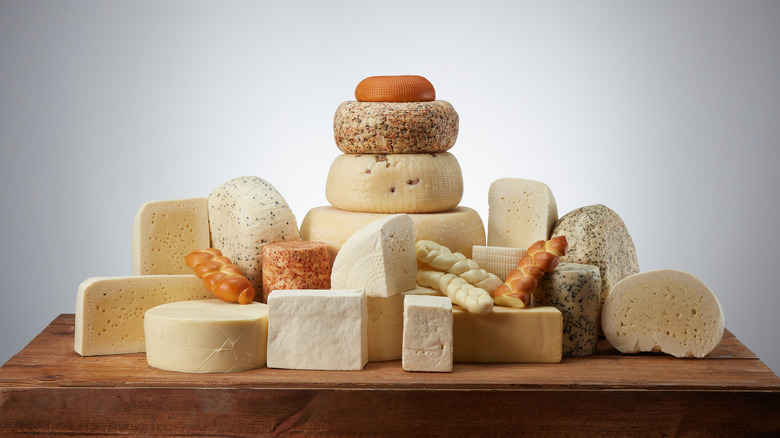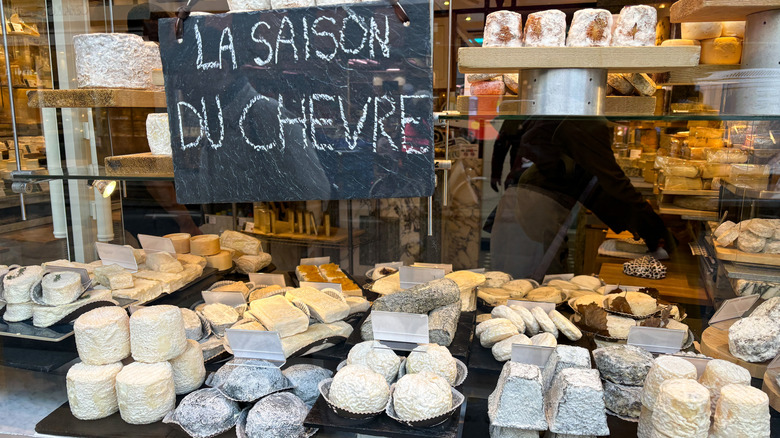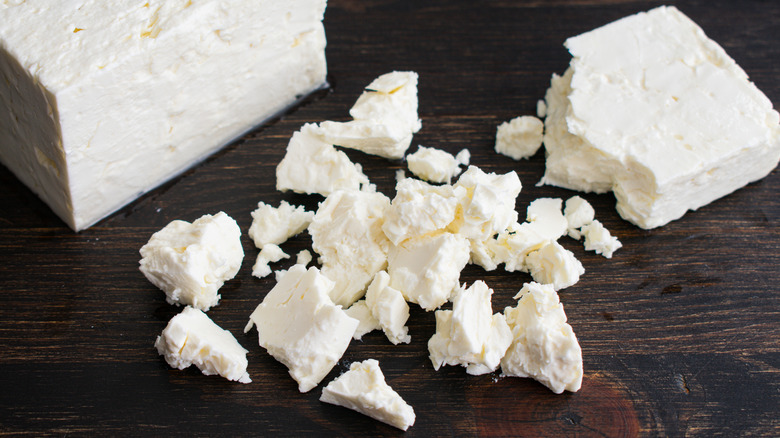Are Chèvre And Feta The Same Thing?
Let's face it, the world is a better place because of cheese, whether you know the difference between chèvre and feta or not. But while they are both incredible varieties of cheese and delicious in their own right, they are actually two quite different things. And understanding those differences can help get you well on your way to being a true cheese connoisseur.
Chèvre and feta are both types of white cheese, but that is pretty much where the similarities between the two end. They have different tastes, different textures, and are made from the milk of completely different animals.
Chèvre is a French word that means goat, and it has come to be synonymous with goat cheese, particularly the soft white cheese that usually comes in the form of a small, soft log or wheel that spreads easily on crackers or crostini. Feta, on the other hand, is a traditional Greek cheese made in a salty brine that typically comes in a brick and has a firmer texture than chèvre. It crumbles easily and can be either eaten as fresh-cut cheese, baked into pasta dishes, or used in savory pastries.
What you need to know about chèvre
Chèvre, pronounced shev-ruh, is low in fat and, while tart and tangy, it has a creamy flavor and texture that pairs well with other ingredients. While it typically comes in a soft, spreadable form, the term chèvre also includes goat cheeses that have aged a bit longer, enough to be hard and crumbly. It is often mixed with things like berries and herbs, resulting in a wide range of available flavors, and can even be marinated for a complex depth of flavors. Because of its versatility, it is a popular addition to most charcuterie boards. Creative chefs have mastered the art of cooking with it, using techniques like stuffing it into zucchini blossoms and frying them for a delectable treat that is crunchy on the outside and creamy on the inside. It can also bring a French flair to a definitively un-French meal, like spreading it on a burger for a delicious pop of flavor.
Because it is made from goat milk, chèvre is digested differently than cheese made from cow milk, making it a great option for people who are allergic to dairy products made from cow milk. In addition, it contains healthy fats and protein, along with vitamins and minerals like vitamin A, riboflavin (vitamin B2), calcium, phosphorous, and iron, making it a healthy addition to any diet.
What you need to know about feta
While chèvre is made from goat's milk, feta is typically made from sheep's milk. It's a traditional Greek cheese, and although there are types of feta made in other countries like Bulgaria and France, the cheese received a Product Designation of Origin (PDO) designation by the EU in 2002, dictating that cheese can only be called feta if it meets a list of criteria. Among the criteria are stipulations that it be made following traditional practices, made within a traditional production region of Greece, and it must be made from either 100% sheep milk or a combination of sheep milk, and no more than 30% goat milk.
Like chèvre, feta cheese is a healthy addition to the diet. It has a higher water count than most cheeses, which contributes to its lower calorie count compared to cheeses like Parmesan, Gouda, or cheddar. Additionally, it contains lots of probiotics, aiding in gut health, and contains plenty of calcium and B vitamins. And on the flip side, it also has fairly high amounts of lactose and sodium.
The saltwater brine feta is cured in is what gives it the slightly sour, tangy flavor it is known for, and its semi-soft texture — which is firm enough to crumble nicely, yet soft enough to give it a smooth mouth-feel — allows it to be used in a variety of ways. Feta can be sliced and eaten plain, crumbled up and used as a topping for salad or pasta, and it's particularly helpful on a weeknight as a way to elevate a simple sheet pan recipe by bringing added flavor and creaminess.


